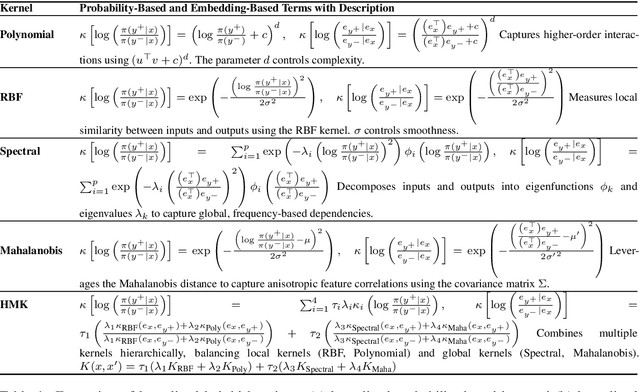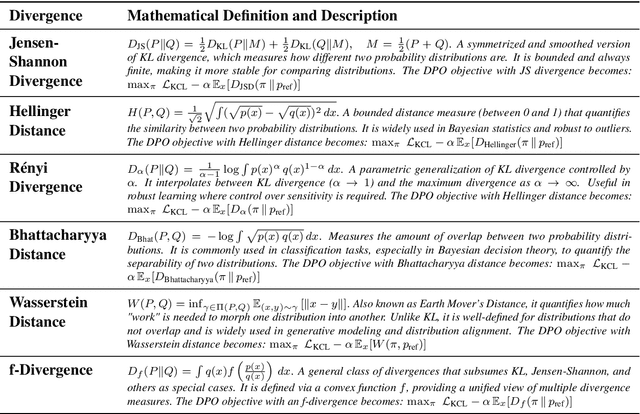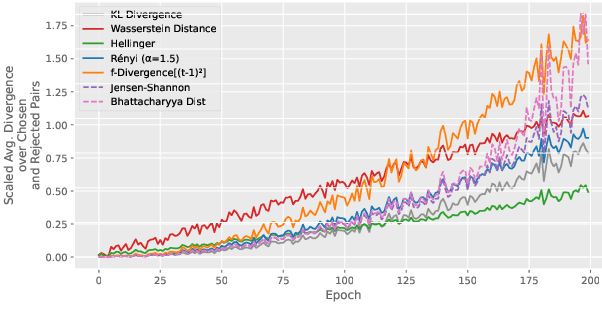Rajarshi Roy
Max Planck Institute for Software Systems, Germany
What is Formal Verification without Specifications? A Survey on mining LTL Specifications
Jan 27, 2025Abstract:Virtually all verification techniques using formal methods rely on the availability of a formal specification, which describes the design requirements precisely. However, formulating specifications remains a manual task that is notoriously challenging and error-prone. To address this bottleneck in formal verification, recent research has thus focussed on automatically generating specifications for formal verification from examples of (desired and undesired) system behavior. In this survey, we list and compare recent advances in mining specifications in Linear Temporal Logic (LTL), the de facto standard specification language for reactive systems. Several approaches have been designed for learning LTL formulas, which address different aspects and settings of specification design. Moreover, the approaches rely on a diverse range of techniques such as constraint solving, neural network training, enumerative search, etc. We survey the current state-of-the-art techniques and compare them for the convenience of the formal methods practitioners.
DPO Kernels: A Semantically-Aware, Kernel-Enhanced, and Divergence-Rich Paradigm for Direct Preference Optimization
Jan 08, 2025



Abstract:The rapid rise of large language models (LLMs) has unlocked many applications but also underscores the challenge of aligning them with diverse values and preferences. Direct Preference Optimization (DPO) is central to alignment but constrained by fixed divergences and limited feature transformations. We propose DPO-Kernels, which integrates kernel methods to address these issues through four key contributions: (i) Kernelized Representations with polynomial, RBF, Mahalanobis, and spectral kernels for richer transformations, plus a hybrid loss combining embedding-based and probability-based objectives; (ii) Divergence Alternatives (Jensen-Shannon, Hellinger, Renyi, Bhattacharyya, Wasserstein, and f-divergences) for greater stability; (iii) Data-Driven Selection metrics that automatically choose the best kernel-divergence pair; and (iv) a Hierarchical Mixture of Kernels for both local precision and global modeling. Evaluations on 12 datasets demonstrate state-of-the-art performance in factuality, safety, reasoning, and instruction following. Grounded in Heavy-Tailed Self-Regularization, DPO-Kernels maintains robust generalization for LLMs, offering a comprehensive resource for further alignment research.
Nemotron-4 340B Technical Report
Jun 17, 2024



Abstract:We release the Nemotron-4 340B model family, including Nemotron-4-340B-Base, Nemotron-4-340B-Instruct, and Nemotron-4-340B-Reward. Our models are open access under the NVIDIA Open Model License Agreement, a permissive model license that allows distribution, modification, and use of the models and its outputs. These models perform competitively to open access models on a wide range of evaluation benchmarks, and were sized to fit on a single DGX H100 with 8 GPUs when deployed in FP8 precision. We believe that the community can benefit from these models in various research studies and commercial applications, especially for generating synthetic data to train smaller language models. Notably, over 98% of data used in our model alignment process is synthetically generated, showcasing the effectiveness of these models in generating synthetic data. To further support open research and facilitate model development, we are also open-sourcing the synthetic data generation pipeline used in our model alignment process.
CircuitVAE: Efficient and Scalable Latent Circuit Optimization
Jun 13, 2024Abstract:Automatically designing fast and space-efficient digital circuits is challenging because circuits are discrete, must exactly implement the desired logic, and are costly to simulate. We address these challenges with CircuitVAE, a search algorithm that embeds computation graphs in a continuous space and optimizes a learned surrogate of physical simulation by gradient descent. By carefully controlling overfitting of the simulation surrogate and ensuring diverse exploration, our algorithm is highly sample-efficient, yet gracefully scales to large problem instances and high sample budgets. We test CircuitVAE by designing binary adders across a large range of sizes, IO timing constraints, and sample budgets. Our method excels at designing large circuits, where other algorithms struggle: compared to reinforcement learning and genetic algorithms, CircuitVAE typically finds 64-bit adders which are smaller and faster using less than half the sample budget. We also find CircuitVAE can design state-of-the-art adders in a real-world chip, demonstrating that our method can outperform commercial tools in a realistic setting.
NV-Embed: Improved Techniques for Training LLMs as Generalist Embedding Models
May 27, 2024



Abstract:Decoder-only large language model (LLM)-based embedding models are beginning to outperform BERT or T5-based embedding models in general-purpose text embedding tasks, including dense vector-based retrieval. In this work, we introduce the NV-Embed model with a variety of architectural designs and training procedures to significantly enhance the performance of LLM as a versatile embedding model, while maintaining its simplicity and reproducibility. For model architecture, we propose a latent attention layer to obtain pooled embeddings, which consistently improves retrieval and downstream task accuracy compared to mean pooling or using the last <EOS> token embedding from LLMs. To enhance representation learning, we remove the causal attention mask of LLMs during contrastive training. For model training, we introduce a two-stage contrastive instruction-tuning method. It first applies contrastive training with instructions on retrieval datasets, utilizing in-batch negatives and curated hard negative examples. At stage-2, it blends various non-retrieval datasets into instruction tuning, which not only enhances non-retrieval task accuracy but also improves retrieval performance. Combining these techniques, our NV-Embed model, using only publicly available data, has achieved a record-high score of 69.32, ranking No. 1 on the Massive Text Embedding Benchmark (MTEB) (as of May 24, 2024), with 56 tasks, encompassing retrieval, reranking, classification, clustering, and semantic textual similarity tasks. Notably, our model also attains the highest score of 59.36 on 15 retrieval tasks in the MTEB benchmark (also known as BEIR). We will open-source the model at: https://huggingface.co/nvidia/NV-Embed-v1.
A High-Fidelity Simulation Framework for Grasping Stability Analysis in Human Casualty Manipulation
Apr 04, 2024Abstract:Recently, there has been a growing interest in rescue robots due to their vital role in addressing emergency scenarios and providing crucial support in challenging or hazardous situations where human intervention is difficult. However, very few of these robots are capable of actively engaging with humans and undertaking physical manipulation tasks. This limitation is largely attributed to the absence of tools that can realistically simulate physical interactions, especially the contact mechanisms between a robotic gripper and a human body. In this letter, we aim to address key limitations in current developments towards robotic casualty manipulation. Firstly, we present an integrative simulation framework for casualty manipulation. We adapt a finite element method (FEM) tool into the grasping and manipulation scenario, and the developed framework can provide accurate biomechanical reactions resulting from manipulation. Secondly, we conduct a detailed assessment of grasping stability during casualty grasping and manipulation simulations. To validate the necessity and superior performance of the proposed high-fidelity simulation framework, we conducted a qualitative and quantitative comparison of grasping stability analyses between the proposed framework and the state-of-the-art multi-body physics simulations. Through these efforts, we have taken the first step towards a feasible solution for robotic casualty manipulation.
ChatQA: Building GPT-4 Level Conversational QA Models
Jan 23, 2024Abstract:In this work, we introduce ChatQA, a family of conversational question answering (QA) models that obtain GPT-4 level accuracies. Specifically, we propose a two-stage instruction tuning method that can significantly improve the zero-shot conversational QA results from large language models (LLMs). To handle retrieval-augmented generation in conversational QA, we fine-tune a dense retriever on a multi-turn QA dataset, which provides comparable results to using the state-of-the-art query rewriting model while largely reducing deployment cost. Notably, our ChatQA-70B can outperform GPT-4 in terms of average score on 10 conversational QA datasets (54.14 vs. 53.90), without relying on any synthetic data from OpenAI GPT models.
Synthesizing Efficiently Monitorable Formulas in Metric Temporal Logic
Oct 26, 2023Abstract:In runtime verification, manually formalizing a specification for monitoring system executions is a tedious and error-prone process. To address this issue, we consider the problem of automatically synthesizing formal specifications from system executions. To demonstrate our approach, we consider the popular specification language Metric Temporal Logic (MTL), which is particularly tailored towards specifying temporal properties for cyber-physical systems (CPS). Most of the classical approaches for synthesizing temporal logic formulas aim at minimizing the size of the formula. However, for efficiency in monitoring, along with the size, the amount of "lookahead" required for the specification becomes relevant, especially for safety-critical applications. We formalize this notion and devise a learning algorithm that synthesizes concise formulas having bounded lookahead. To do so, our algorithm reduces the synthesis task to a series of satisfiability problems in Linear Real Arithmetic (LRA) and generates MTL formulas from their satisfying assignments. The reduction uses a novel encoding of a popular MTL monitoring procedure using LRA. Finally, we implement our algorithm in a tool called TEAL and demonstrate its ability to synthesize efficiently monitorable MTL formulas in a CPS application.
GraPhSyM: Graph Physical Synthesis Model
Aug 07, 2023Abstract:In this work, we introduce GraPhSyM, a Graph Attention Network (GATv2) model for fast and accurate estimation of post-physical synthesis circuit delay and area metrics from pre-physical synthesis circuit netlists. Once trained, GraPhSyM provides accurate visibility of final design metrics to early EDA stages, such as logic synthesis, without running the slow physical synthesis flow, enabling global co-optimization across stages. Additionally, the swift and precise feedback provided by GraPhSym is instrumental for machine-learning-based EDA optimization frameworks. Given a gate-level netlist of a circuit represented as a graph, GraPhSyM utilizes graph structure, connectivity, and electrical property features to predict the impact of physical synthesis transformations such as buffer insertion and gate sizing. When trained on a dataset of 6000 prefix adder designs synthesized at an aggressive delay target, GraPhSyM can accurately predict the post-synthesis delay (98.3%) and area (96.1%) metrics of unseen adders with a fast 0.22s inference time. Furthermore, we illustrate the compositionality of GraPhSyM by employing the model trained on a fixed delay target to accurately anticipate post-synthesis metrics at a variety of unseen delay targets. Lastly, we report promising generalization capabilities of the GraPhSyM model when it is evaluated on circuits different from the adders it was exclusively trained on. The results show the potential for GraPhSyM to serve as a powerful tool for advanced optimization techniques and as an oracle for EDA machine learning frameworks.
Reinforcement Learning with Temporal-Logic-Based Causal Diagrams
Jun 23, 2023Abstract:We study a class of reinforcement learning (RL) tasks where the objective of the agent is to accomplish temporally extended goals. In this setting, a common approach is to represent the tasks as deterministic finite automata (DFA) and integrate them into the state-space for RL algorithms. However, while these machines model the reward function, they often overlook the causal knowledge about the environment. To address this limitation, we propose the Temporal-Logic-based Causal Diagram (TL-CD) in RL, which captures the temporal causal relationships between different properties of the environment. We exploit the TL-CD to devise an RL algorithm in which an agent requires significantly less exploration of the environment. To this end, based on a TL-CD and a task DFA, we identify configurations where the agent can determine the expected rewards early during an exploration. Through a series of case studies, we demonstrate the benefits of using TL-CDs, particularly the faster convergence of the algorithm to an optimal policy due to reduced exploration of the environment.
 Add to Chrome
Add to Chrome Add to Firefox
Add to Firefox Add to Edge
Add to Edge